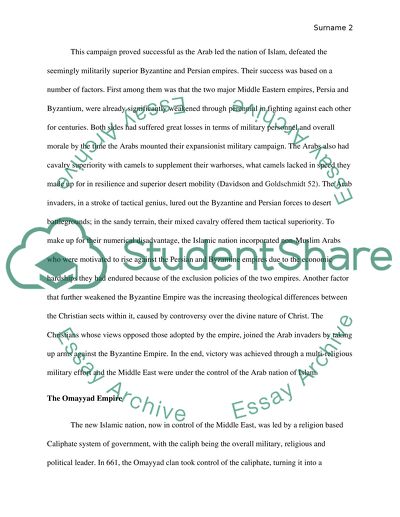Retrieved from https://studentshare.org/history/1634352-why-did-islam-and-the-arabs-succeed-in-spreading-throughout-the-greater-middle-east-gulf-against-the-byzantines-and-persians-what-were-the-military-successes-of-the-omayyad-and-abbasids-arab-empires
https://studentshare.org/history/1634352-why-did-islam-and-the-arabs-succeed-in-spreading-throughout-the-greater-middle-east-gulf-against-the-byzantines-and-persians-what-were-the-military-successes-of-the-omayyad-and-abbasids-arab-empires.


